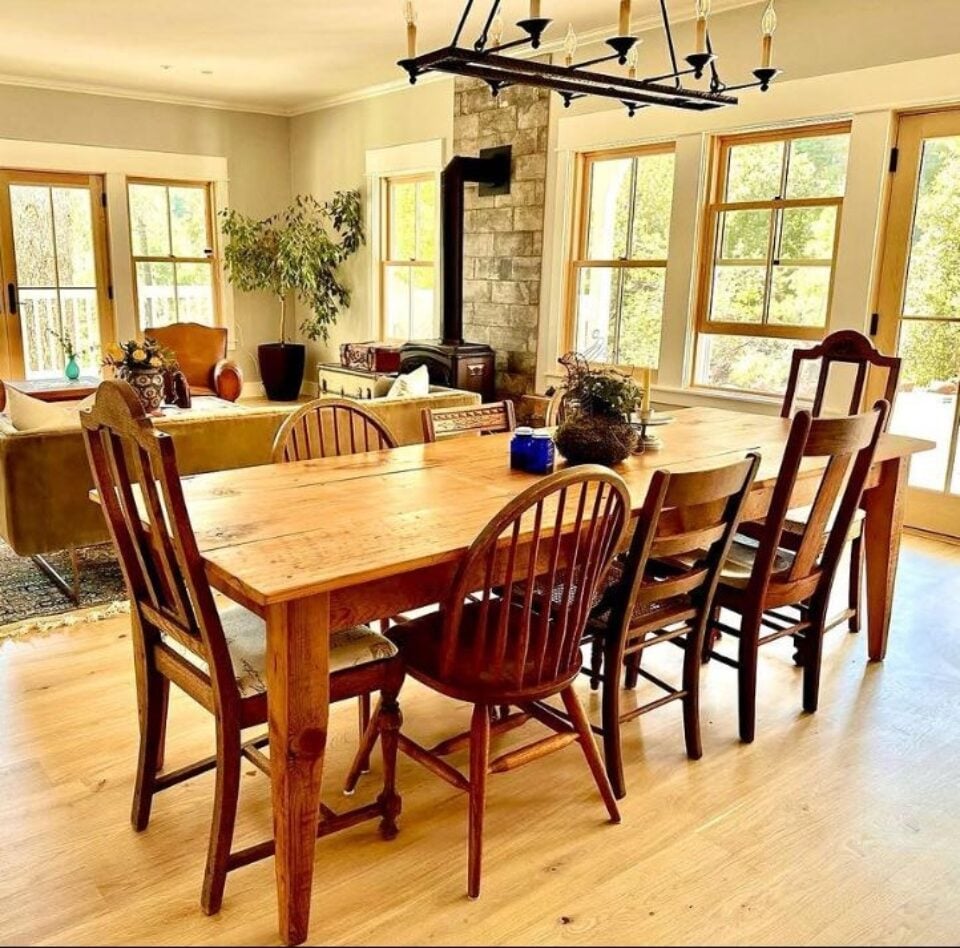The Ultimate Guide to Picking the most effective Styles for Dining Table Legs
Picking the best designs for dining table legs is a nuanced process that calls for balancing visual charm with useful considerations. Whether you are attracted to the sleek lines of modern-day layouts, the heat of rustic farmhouse styles, or the ageless sophistication of classic workmanship, each choice can dramatically impact your dining area. Custom-made alternatives offer a possibility for personal expression, ensuring your table comes to be an unique prime focus. Comprehending the product and surface choices additionally improves this decision-making procedure. As we discover these varied styles, you'll uncover just how to harmonize kind and feature in your dining area.
Modern Table Legs
In the realm of contemporary furnishings design, modern-day table legs stand apart for their sleek and ingenious aesthetic appeals. Identified by clean lines and minimal types, these legs frequently use products such as stainless steel, chrome, and tempered glass to develop a sophisticated aesthetic allure. Not just do they enhance the overall beauty of the dining table, but they likewise add to its architectural honesty and practical adaptability.
Among the vital features of modern-day eating table legs is their versatility to various table tops, from marble and glass to wood and crafted surfaces. Developers often experiment with geometric forms, including angular, conical, and even sculptural forms, to add a distinct touch per item. This approach not just makes certain a contemporary look but likewise enables better personalization to fit private preferences and interior style.
Modern eating table legs additionally highlight convenience of maintenance and durability. Hence, contemporary dining table legs personify both type and function, making them a prominent choice in today's layout landscape.
Rustic Farmhouse Designs
While contemporary table legs captivate with their smooth, minimalist designs, rustic farmhouse styles provide a contrasting yet equally engaging technique to furniture aesthetics. Rooted in simplicity and functionality, rustic farmhouse table legs usually feature robust, solid wood constructions that evoke a feeling of warmth and practice. These designs normally integrate reclaimed or distressed timber, including character and a vintage charm to any eating area.
One of the most distinguishing functions of rustic farmhouse table legs is their considerable, tough appearance. Typically crafted from oak, pine, or other hardy timbers, these legs can consist of a variety of shapes, from straight and square to elegantly turned or tapered styles (dining room table legs). The craftsmanship highlights durability, with hand-finished details that highlight the natural grain and blemishes of the wood, making each piece uniquely beautiful
In addition, rustic farmhouse legs often use classic joinery methods, such as mortise and tenon joints, making certain stability and longevity. This style is specifically appropriate for creating a cozy, welcoming atmosphere, perfect for household celebrations and communal eating experiences. By integrating rustic farmhouse table legs, one can effortlessly mix performance with timeless aesthetic appeals, attaining a timeless appeal that enriches the dining atmosphere.
Classic and Classic Styles
Long-lasting style defines classic and classic dining table leg layouts, effortlessly blending practice with elegance. These styles record the significance of enduring beauty, typically featuring detailed workmanship that admires historic designs while preserving a contemporary charm (dining room table legs). The aesthetic equilibrium accomplished with such legs guarantees they continue to be pertinent and fashionable throughout various indoor settings, from traditional to modern homes
Furthermore, the convenience of traditional eating table legs allows them to enhance various tabletop designs, creating a natural and harmonious dining experience. Their classic nature ensures that they withstand altering fads, making them an important financial investment for any eating area. Whether you seek downplayed class or grand appeal, classic table legs offer a perfect mix of important site kind and feature, boosting the general visual of your eating location.
Customized and Special Options
When it involves eating table leg designs, personalized and special choices use an unique method to display individual preference and creativity. These choices enable house owners and developers to relocate past traditional styles, creating a table that genuinely mirrors private style and the general motif of the dining space. Personalized legs can be crafted in a myriad of shapes, sizes, and patterns, from complex carvings to contemporary geometric types, allowing limitless possibilities.
Special table legs can work as a focal point in an area, drawing interest and sparking discussion. As an example, legs made to look like tree branches can bring a touch of nature inside your home, while sculptural metal legs can impart a modern and commercial panache. One more preferred fad is integrating combined media, such as integrating timber with metal or glass, to create a striking contrast and added aesthetic interest.

Material and Complete Options
Choosing the appropriate material and finish for dining table legs is essential to webpage attaining the wanted visual and functionality. The option of products can substantially affect the table's sturdiness, maintenance, and overall design. Typical materials for eating table legs consist of timber, steel, and acrylic.
Timber stays a timeless option, offering heat you could try here and adaptability. Maple, oak, and walnut are prominent alternatives as a result of their toughness and abundant appearances. Steel legs, such as those made from stainless steel or iron, provide a modern-day and commercial look. They are known for their strength and reduced upkeep. Polymer legs, although much less standard, supply a modern and ventilated feeling, suitable for smaller rooms or minimal styles.
Wood legs can be discolored to enhance their natural grain or painted for a more consistent look. Metal legs could be polished for a sleek coating or powder-coated for included protection versus wear and rust.
Eventually, the choice of material and coating must line up with the table's general style, usage needs, and the existing decor of the dining space.
Conclusion
The choice of eating table legs substantially influences the aesthetic and performance of an eating room. Modern styles supply sleek, minimal allure, while rustic farmhouse designs give heat and personality. Careful factor to consider of these aspects ensures an unified and aesthetically appealing eating location.